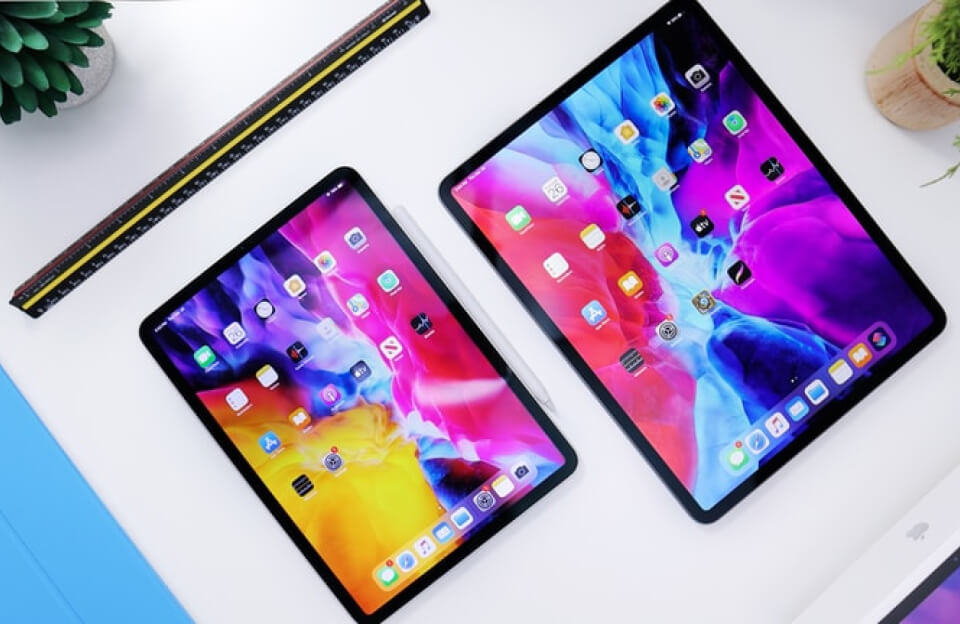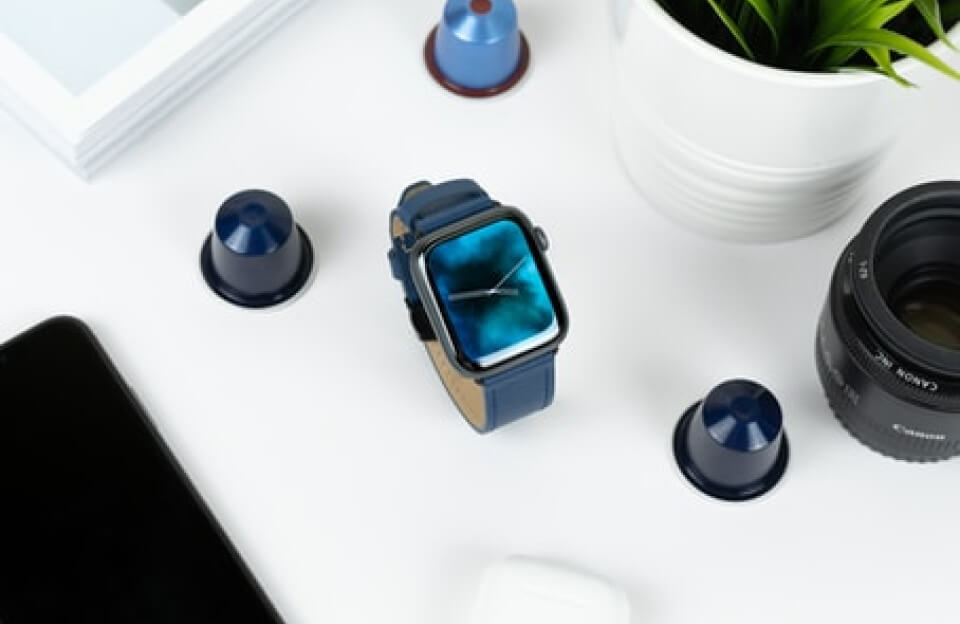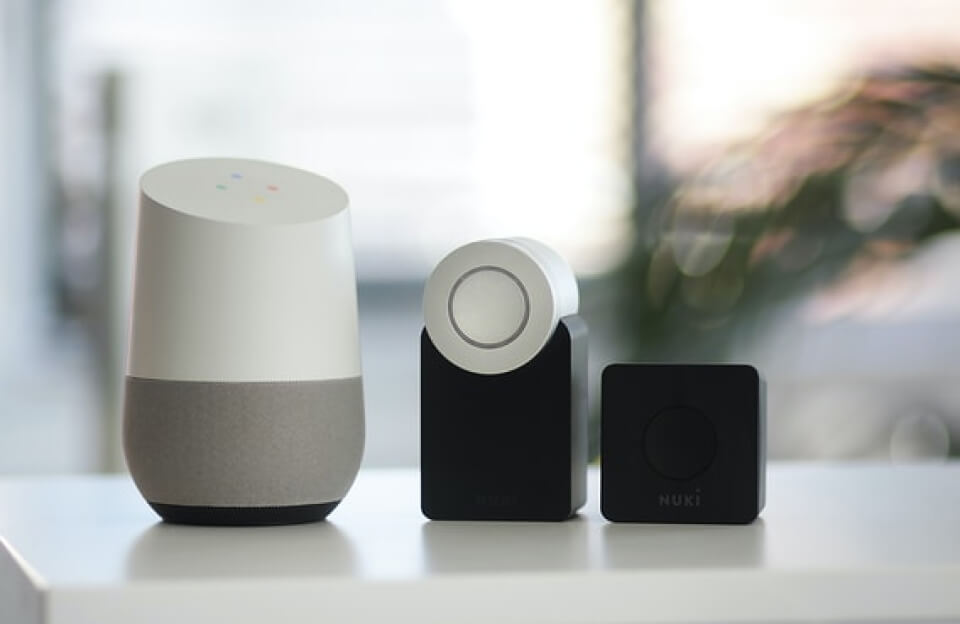Introduction – When Tablet Met Beast Mode
In April 2021, Apple did something that blurred the line between tablets and laptops —
They put their powerful M1 chip — the same one used in the MacBook Pro — into the iPad Pro.
It wasn’t just an upgrade.
It was a bold move that said:
“This is no longer just a tablet. This is a workstation, a canvas, a film studio — in your hands.”
And the results? Jaw-dropping.
The iPad Pro became a device that could edit 4K video, run desktop-class apps, handle huge photo files, and still give you 10+ hours of battery life — all while weighing under 500 grams.
In this article, we’ll explore:
Final verdict — is this really a MacBook replacement?
What makes the M1 iPad Pro so powerful
How it compares to the MacBook Pro
Who really benefits from this upgrade
Where it shines, and where it still falls short
Real-world examples of usage
M1 Chip – The Real Game Changer
When Apple introduced the M1 chip in 2020, it changed the way people looked at performance.
But in 2021, when that same chip entered the iPad Pro, it became crystal clear —
This tablet now had the heart of a MacBook Pro.
What’s Inside the M1?
Let’s break down what this chip packs:
| Component | Details |
|---|---|
| CPU | 8-core (4 performance + 4 efficiency cores) |
| GPU | 8-core graphics engine |
| Neural Engine | 16-core (machine learning, image processing) |
| RAM Options | 8 GB or 16 GB |
| Storage | Up to 2 TB SSD |
| Fabric Bandwidth | 100 GB/s |
Fun Fact: The same chip runs on:
- MacBook Pro (2020)
- MacBook Air (2020)
- Mac mini (2020)
That means:
✅ Same performance levels
✅ Same processing capabilities
✅ On a device that’s nearly half the size and weight
Benchmarks That Shocked Everyone
Real-world tests proved the iPad Pro M1 isn’t just a powerful tablet —
It’s one of the fastest mobile devices on the planet.
- Geekbench 5 Scores:
- CPU (Single-Core): ~1710
- CPU (Multi-Core): ~7250
- GPU (Metal): ~21500
Compare that to:
- MacBook Pro M1 (13-inch): Similar scores
- iPad Pro (A12Z, 2020): ~40–50% lower in both CPU & GPU
That’s a 50% performance boost year-over-year.
Real Impact of the M1 Chip
Here’s what the M1 does for actual users:
| Use Case | Experience on iPad Pro M1 |
|---|---|
| Video Editing | 4K editing in LumaFusion is buttery smooth |
| Photo Retouching (RAW) | Handles large PSD files with zero lag |
| Gaming | Console-like frame rates on Apple Arcade titles |
| App Multitasking | No stutter, no reloads – even with 6+ apps |
| AI/ML Tasks | Fast object recognition, real-time AR rendering |
The M1 chip also enables:
- Thunderbolt 4/USB 4 support
- Faster SSD speeds (~2x over previous gen)
- Instant wake from sleep
- Better thermal efficiency = no fans, yet stays cool
In Simple Terms?
You’re literally getting MacBook Pro performance in a 12.9″ touchscreen device that:
- Works with Apple Pencil
- Has Face ID
- Supports 5G
- And weighs under 700g
It’s not just powerful for a tablet.
It’s powerful — period.
iPad Pro vs. MacBook Pro – Where They Meet, Where They Don’t
Jab dono devices ke andar ek hi chip ho — M1 — toh obvious question aata hai:
“Toh fir difference kya reh gaya hai?”
Chalo break karte hain har point ko — practical, performance, and purpose ke basis par.
1. Performance – Pretty Much Identical
On paper and in real world:
- CPU/GPU benchmarks are almost the same
- Apps like Lightroom, LumaFusion, Notion, Safari — sab seamlessly run hot hain
M1 chip ka magic yeh hai ki:
- Whether it’s a Mac or an iPad — multitasking, export times, app loading — sab me blazing fast speed multi hai
✅ Performance-wise: Tie
2. Form Factor – Tablet Flexibility vs Laptop Utility
| Feature | iPad Pro M1 (12.9”) | MacBook Pro M1 (13”) |
|---|---|---|
| Weight | ~682g (Wi-Fi) | ~1.4 kg |
| Touchscreen | ✅ Yes | ❌ No |
| Keyboard/Trackpad | Optional (Magic Keyboard) | Built-in |
| Apple Pencil Support | ✅ Yes (2nd Gen) | ❌ No |
| Standalone use | ✅ Tablet mode, handwriting, sketching | ❌ Not made for tablet work |
Bhai agar portability aur “use anywhere, hold like a book” feel chahiye, toh iPad Pro is undefeated.
Lekin agar tumhara kaam keyboard-heavy ya programming/journalism jaisa hai — MacBook gives better ergonomics.
Verdict: Creatives & casuals → iPad Pro
Typists, devs, and coders → MacBook Pro
3. Operating System – iPadOS vs macOS
Here’s where things split.
- macOS = Full desktop OS
- Full Finder access
- Native terminal, development tools
- External display with extended screen support
- Full versions of apps (Final Cut, Xcode, etc.)
- iPadOS = Touch-first mobile OS
- Limited file structure
- No proper desktop-level multitasking (though Stage Manager helps)
- Apps are still mobile-first (even if powerful)
Biggest limitation of iPad Pro?
Powerful hardware, but mobile software.
A MacBook is like a truck.
An iPad is like a sportscar — fast, sleek, but with a smaller trunk.
4. Ports, Storage & Expandability
| Feature | iPad Pro M1 | MacBook Pro M1 |
|---|---|---|
| Ports | 1x Thunderbolt 4 (USB-C) | 2x Thunderbolt / USB 4 |
| External Display | Mirroring only (iPadOS limit) | Extended display supported |
| Storage | Up to 2 TB | Up to 2 TB |
| RAM | 8 or 16 GB | 8 or 16 GB |
iPad is limited by software flexibility. Even with Thunderbolt support, you can’t yet use it like a full workstation (external GPUs, dual monitors, etc.)
5. Battery Life – Both Are Marathon Runners
- iPad Pro M1 = 10–11 hours typical use
- MacBook Pro M1 = 17–20 hours web + light work
For travelers, MacBook is still the battery king.
Summary Verdict
| Category | Winner |
|---|---|
| Portability | iPad Pro |
| Multitasking | MacBook Pro |
| App Flexibility | MacBook Pro |
| Creative Work | iPad Pro |
| Battery | MacBook Pro |
| Overall OS Power | MacBook Pro |
| Versatility | iPad Pro |
In short:
MacBook Pro M1 is a more capable computer
iPad Pro M1 is the best touch tablet ever made
Who Is the iPad Pro M1 Really For?
Apple devices hamesha premium hoti hain — aur iPad Pro M1 bhi koi exception nahi.
Toh sawaal yeh hai:
“Yeh ₹1.20–1.80 lakh ka iPad kis ke liye truly worth hai?” 🤔
Chalo categories ke basis par break karte hain:
1. Creative Professionals (Designers, Artists, Photographers)
This is iPad Pro M1’s sweet spot.
- Apple Pencil 2 + ProMotion display (120Hz) = unmatched drawing & sketching experience
- Apps like Procreate, Affinity Photo, Lightroom, LumaFusion run flawlessly
- High-res image editing, retouching, and real-time drawing = buttery smooth
📸 Example:
A wedding photographer can shoot RAW, airdrop to iPad, and edit on Lightroom right there — without ever opening a laptop.
✅ Verdict: 10/10 buy for creatives who value touch interaction + color accuracy.
2. Business Professionals & Corporate Users
- Lightweight, perfect for meetings
- Split View for note-taking & presentations
- Magic Keyboard turns it into a near-laptop
- Face ID = Instant unlock + secure
Works perfectly for:
- Business analysts using Excel/Notion
- Executives using Zoom, Slack, Mail, PDF markups
- On-the-go managers needing power + portability
✅ Verdict: If your work is cloud-based + app-focused, it’s a great choice.
3. Content Creators & YouTubers
- LumaFusion video editing supports 4K multicam projects
- GarageBand, Ferrite great for podcasting
- Supports Thunderbolt external drives for raw media files
Fun fact: Many creators now use iPad Pro + Pencil to storyboard, edit reels, design thumbnails — all in one place.
✅ Verdict: If you make video, audio, reels, social media content — it’s a power beast.
4. Students (Especially in Creative or Tech Fields)
For students in:
- Architecture
- Media & Design
- Fashion
- Engineering
iPad Pro gives:
- Note-taking with Apple Pencil (Notability/GoodNotes)
- Drawing diagrams, flowcharts, sketches
- Watching lectures + attending Zoom seamlessly
But for coders or dev students, the MacBook Pro is a better fit due to OS-level flexibility.
✅ Verdict: Arts/Design/Media students = YES
Coding/Data students = Go for MacBook
5. Not Ideal For…
- Hardcore gamers (still lacks PC/console-level GPU)
- Developers need Xcode, Docker, and terminals
- Heavy multitaskers who rely on external monitors
❌ For these use cases, the MacBook Pro remains superior due to macOS flexibility.
In Short:
| User Type | Should Buy iPad Pro M1? |
|---|---|
| Creatives & Designers | ✅ 100% Yes |
| YouTubers/Podcasters | ✅ Yes |
| Business Professionals | ✅ Mostly Yes |
| University Students | ✅ Depends on stream |
| Developers / Coders | ❌ Prefer MacBook Pro |
| Multitaskers / Monitors | ❌ Not ideal |
Limitations of the iPad Pro M1 – What Still Holds It Back
iPad Pro M1 undoubtedly ek power-packed tablet hai — lekin phir bhi kuch cheezein hai jo isse MacBook-level complete replacement banne se rokti hain.
Let’s break it down:
1. iPadOS – The Biggest Bottleneck
M1 chip ne hardware power de di, lekin iPadOS abhi bhi mobile-first OS hai.
- No full file system access
- No desktop-class Finder/terminal
- Apps are sandboxed (less powerful than their macOS counterparts)
- No support for full external monitor extension — only screen mirroring
Example:
You can connect a 4K monitor via Thunderbolt, but iPad will only mirror the screen, not extend it like macOS.
❌ Verdict: M1 hardware is being underutilized due to software limitations.
2. Limited App Support for Pro Workflows
Although apps like LumaFusion, Affinity, and Procreate are brilliant…
There’s no Final Cut Pro, no full Photoshop, no Xcode, no Docker, and no Android Studio.
For developers, engineers, and heavy creatives, this is a dealbreaker.
Fun fact: Apple only launched Final Cut Pro & Logic Pro for iPad in 2023 — but they’re still iPad-optimized versions, not macOS-level.
✅ Good step forward — but still not full freedom.
3. Port Limitation and Accessory Dependence
- Only 1 USB-C/Thunderbolt 4 port
- Need dongles for USB-A, HDMI, Ethernet
- No SD card slot (essential for photographers)
- Magic Keyboard is sold separately (₹29,000+)
- Apple Pencil also separate (₹11,000+)
Toh actual setup ban jaata hai:
iPad Pro (₹1.2L) + Keyboard + Pencil = ₹1.6–1.8L
Still no proper ports or display flexibility.
❌ Too expensive for something that still needs external tools for completeness.
📹 4. Webcam and Audio Still Mid-Range
- Front camera upgraded to 12MP (with Center Stage), but rear cameras not very useful for pros
- No 4K webcam
- Audio quality is great, but Zoom/Teams apps still lack macOS-level settings/customization
📸 Verdict: Great for casual video calls — but not built for professional creators/streamers.
5. No Major Battery Advantage Over MacBook
Despite being a tablet:
- iPad Pro M1: 10–11 hrs (real usage)
- MacBook Pro M1: 17–20 hrs (real usage)
Many expected a longer battery on iPad due to M1 efficiency, but high-res display and apps drain juice fast.
In Short — What’s Still Holding It Back?
| Limitation | Impact |
|---|---|
| iPadOS restrictions | Can’t run desktop-grade workflows |
| No full external monitor support | Less useful for multitasking professionals |
| Limited app support (Pro apps) | Developers, editors still prefer macOS |
| Expensive accessories | Total cost > MacBook Pro in many cases |
| One port only | Frequent dongle usage |
Final Verdict – Can the iPad Pro M1 Replace Your Laptop?
The iPad Pro M1 is not just a tablet — it’s a statement by Apple.
They’ve said loud and clear:
“We’ve built a device that’s as powerful as a MacBook Pro… but reimagined for touch, creativity, and mobility.”
But does that mean it can replace your laptop?
Let’s give you a clear answer based on your use case:
Yes, It Can — If You Are:
- A graphic designer, artist, or illustrator
- A YouTuber, podcaster, or photo editor
- A student in media, arts, or architecture
- A professional who works mostly in web apps, mail, docs, and presentations
- A traveler or on-the-go worker who needs power + portability
In these cases, iPad Pro M1 is not just good — it’s perfect.
It gives you:
- Power of a MacBook Pro
- Touchscreen interaction
- Drawing capabilities
- Portability under 700g
- And now even supports Logic Pro & Final Cut (lite versions)
No, It Can’t (Yet) — If You Are:
- A software developer, data analyst, or engineer
- A multitasker who uses dual screens, complex workflows
- Someone who needs terminal, Xcode, Docker, or advanced automation
- A user who expects desktop-level file control, mouse-first experience, and full external monitor support
In these cases, MacBook Pro is still the better tool for the job.
The Value Equation
| Device Combo | Total Cost (India) |
|---|---|
| iPad Pro M1 12.9” | ₹1,12,000 – ₹1,40,000 |
| Magic Keyboard | ₹29,000 |
| Apple Pencil 2 | ₹11,000 |
| Total | ₹1,52,000 – ₹1,80,000 |
Compare that to MacBook Pro M1: ₹1,20,000 – ₹1,45,000 (base to maxed)
You’re paying more for iPad + accessories, and still not getting a full macOS.
Final Words
The iPad Pro M1 is a technological marvel — one of the most powerful, beautifully built devices Apple has ever made.
But even with the same chip as the MacBook Pro, it’s not meant to replace the MacBook for everyone.
It’s meant to redefine what a high-end tablet can do.
Think of it this way:
The iPad Pro M1 is not a laptop killer.
It’s a new category of hybrid device — that’s still evolving.
Final Verdict Table
| Category | iPad Pro M1 Verdict |
|---|---|
| Power & Speed | ✅ Excellent |
| Design & Portability | ✅ Best-in-class |
| App Ecosystem (Touch-first) | ✅ Creative-friendly |
| App Ecosystem (Pro Tools) | ❌ Still catching up |
| OS Flexibility | ❌ iPadOS limits it |
| Laptop Replacement Potential | ⚠️ Depends on use case |
| Value for Money | ⚖️ Great for specific users |
🔥 Verdict:
For creatives, visual pros, and app-based professionals, the iPad Pro M1 is more than enough.
For coders, editors, multitaskers — stick to MacBook (for now).


